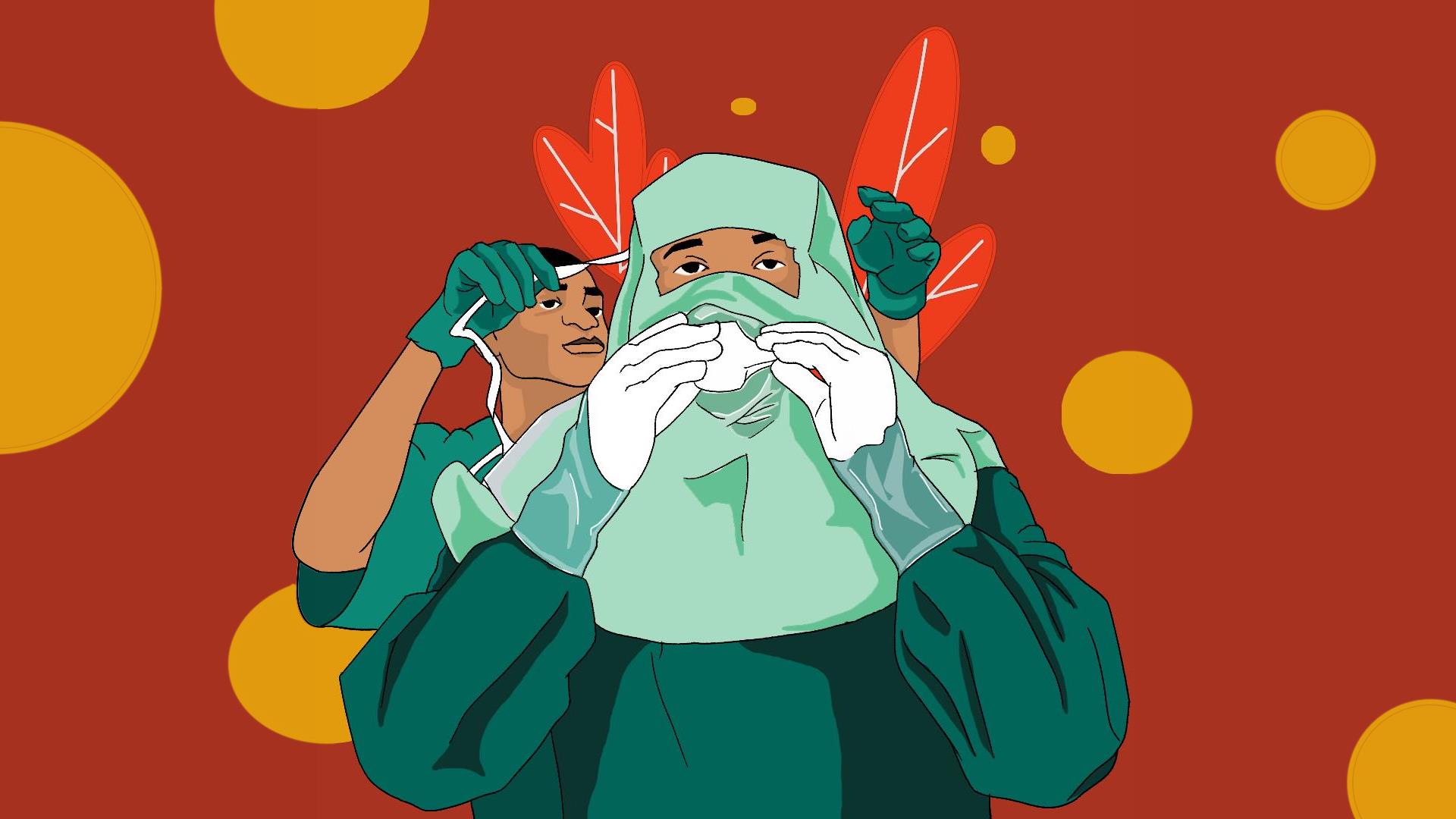🎧 Listen to: Ebola

Ebola
Understanding Ebola?
Ebola is a deadly disease that has affected many African countries, causing fear and loss. It is a virus that spreads from animals to humans and then from person to person. The first cases of Ebola were recorded in 1976 in Sudan and the Democratic Republic of Congo (DRC), near the Ebola River, hence the name.
Although the virus has been present for decades, the most severe outbreak occurred in
West Africa between 2014 and 2016, infecting over 28,000 people and claiming more than 11,000 lives in Guinea, Liberia, and Sierra Leone. The mortality rate of Ebola is about 50%, meaning half of the people who get it do not survive.
How common is Ebola in Africa?
Ebola is mainly found in central and west Africa, especially in countries like the
Democratic Republic of Congo, Guinea, Sierra Leone, and Liberia. Smaller outbreaks have also occurred in Uganda, Sudan, and Côte d’Ivoire. The 2014–2016 outbreak was the largest, but new cases still emerge, making awareness and prevention crucial.
What causes Ebola?
Ebola is caused by the Ebola virus, which belongs to a group of viruses known as Filoviruses. These viruses cause hemorrhagic fever, meaning they can lead to severe bleeding, both inside and outside the body. The different types of Ebola virus include:
- Zaire Ebola virus (most deadly and common)
- Sudan Ebola virus
- Bundibugyo Ebola virus
- Taï Forest Ebola virus (found in Côte d’Ivoire)
- Reston Ebola virus (mostly affects animals)
How does Ebola spread?
Ebola is not airborne and cannot spread just by being near an infected person. It is transmitted through direct contact with bodily fluids of an infected person or animal, such as:
- Blood
- Saliva
- Sweat
- Vomit
- Feces (toilet waste)
- Breast milk
- Urine
- Semen (Ebola can stay in semen for months even after recovery)
Who is at risk?
Certain people are at higher risk of getting Ebola, including:
- Healthcare workers treating Ebola patients
- Family members caring for an infected relative
- People who attend funerals of Ebola victims and touch the body
- Hunters and bushmeat sellers who handle wild animals like bats and monkeys
- People traveling to outbreak areas Signs and symptoms of Ebola?
Ebola symptoms usually appear 8–10 days after infection, but they can take as little as 2 days or as long as 21 days to show up. The first sign is usually extreme fatigue (feeling very weak). Other symptoms include:
- High fever
- Severe headache
- Muscle and joint pain
- Sore throat
- Stomach pain
- Vomiting and diarrhea
- Unexplained bleeding or bruising
How is Ebola diagnosed?
Since Ebola symptoms can look like malaria or typhoid, doctors use blood tests to confirm the disease. These tests check for:
- The presence of the Ebola virus in the blood
- Low or high white blood cell counts (cells that fight infections)
- Low platelet counts (cells that help stop bleeding)
- Liver damage
Is there a cure for Ebola?
Currently, there is no specific cure for Ebola. However, supportive treatment can help improve survival chances. This includes:
- Giving fluids to prevent dehydration
- Controlling blood pressure
- Providing oxygen support if needed
- Treating other infections that may develop
- Using experimental Ebola vaccines in outbreak areas
How can you protect yourself from Ebola?
Prevention is the best way to protect yourself and your family from Ebola. Here are some key steps:
- Avoid contact with the blood or bodily fluids of infected people
- Wash your hands regularly with soap and water or use hand sanitizer
- Do not handle dead bodies of suspected Ebola victims (leave this to trained health workers)
- Avoid eating bushmeat (bats, monkeys, and other wild animals)
- Wear protective clothing if caring for someone with Ebola
- Report symptoms early if you or someone you know has signs of Ebola
What happens after recovery?
Not everyone who gets Ebola dies. Some people recover, but they may experience longterm effects such as:
- Joint pain
- Hair loss
- Fatigue (extreme tiredness)
- Memory problems and confusion
- Vision problems
- Liver inflammation
About 50% of Ebola patients do not survive, which is why early medical care and prevention are so important.
Conclusion?
Ebola is a deadly but preventable disease. Since it mainly affects African countries, it is important for everyone to be aware of how it spreads and how to protect themselves. If you experience symptoms or come into contact with an infected person, seek medical help immediately.
